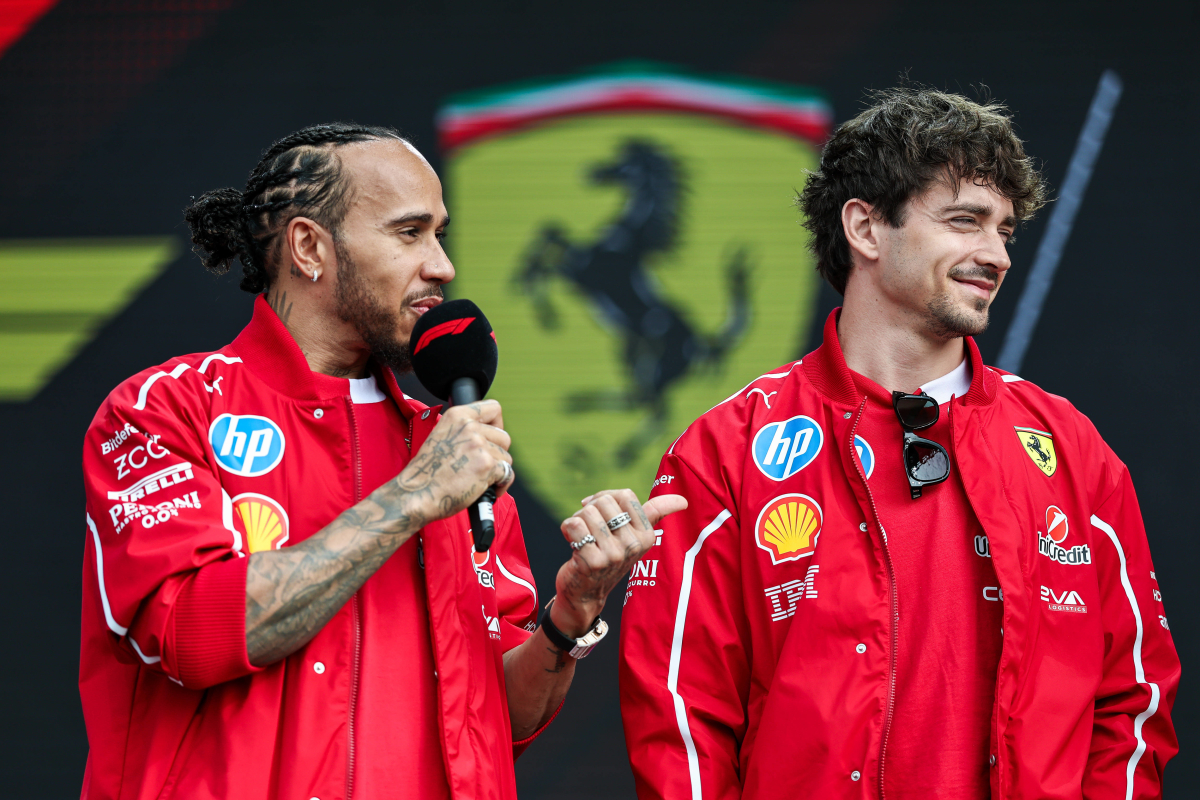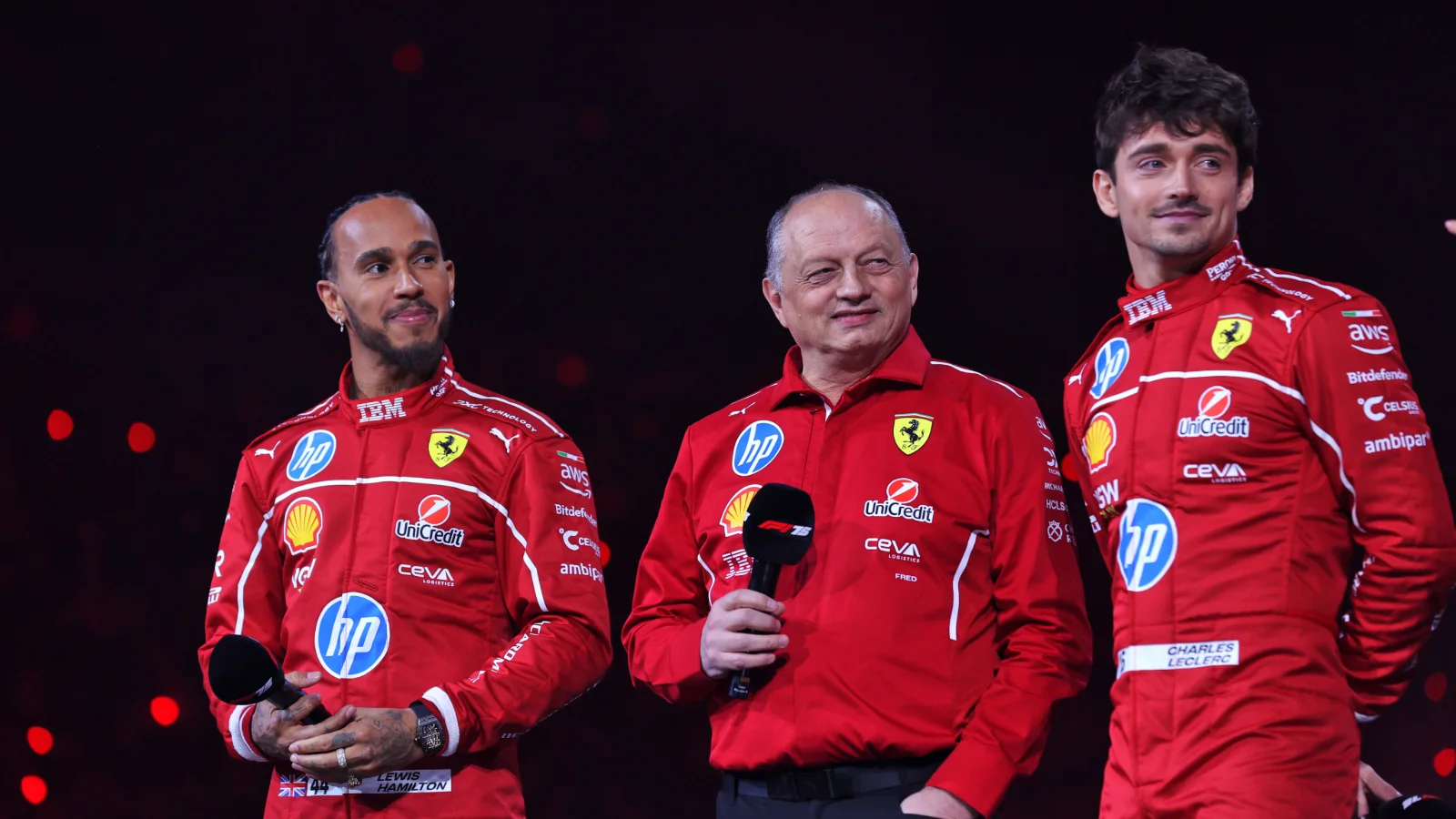For months, to be a Ferrari fan was to understand heartbreak. It was an exercise in managing expectations, watching a season that began with glimmers of hope dissolve into a familiar, frustrating pattern of “what could have been.”
The 2025 Formula 1 season had been a gauntlet of technical frustrations, missed opportunities, and questionable strategy calls that left the Tifosi and the team itself wondering where the magic had gone. The pattern was agonizingly predictable: promising pace in practice, a flicker of hope in qualifying, and then, the inevitable sinking feeling on Sunday evening as it all unraveled.
What happened at the Circuit of the Americas wasn’t just a good result; it was a transformation. It was a weekend so flawless, so precise, that it left even the team’s own management momentarily speechless. This wasn’t a lucky break. This wasn’t a chaotic race that fell into their laps. This was, according to post-race analysis, a masterpiece of precision, execution, and teamwork.
When Charles Leclerc crossed the line to secure a masterful third-place podium, with his teammate Lewis Hamilton battling to a strong fourth, it signaled something far more profound than just a haul of points. It posed a question that sent a ripple of fear through the paddock: Is Ferrari back?

The transformation was visible from the moment the lights went out. Both Leclerc and Hamilton, who had struggled with an unpredictable car, launched off the line with a clean, aggressive precision that had been missing all year. They navigated the infamous chaos of Turn 1 perfectly, positioning themselves to attack. Leclerc held his ground, staying within striking distance of the leaders, while Hamilton’s getaway from fifth was a show of pure awareness and control, slotting himself right into the mix with the Mercedes and McLarens.
In those opening laps, the narrative changed. This wasn’t a Ferrari hanging on; this was a Ferrari with real, tangible pace. Leclerc wasn’t just defending; he was attacking. The discipline from both drivers was remarkable, especially for a team that had seemed to struggle with race management all season.
But pace alone doesn’t win races or erase a season of doubt. The real story, the secret to this metamorphosis, lay in the decisions made long before the race began. For once, the Ferrari strategy room, a source of so much fan frustration, got it right. They didn’t just react; they acted. They made a bold, proactive decision to split the strategies between their drivers. Leclerc was placed on a one-stop approach, a move designed to secure vital track position. Hamilton, conversely, was unleashed on a more aggressive two-stop strategy, aimed at maximizing tire performance to hunt down his rivals.
The execution was impeccable. The timing of both pit stops allowed the drivers to remain competitive without the crippling handicap of falling into heavy traffic. It was a rare, beautiful weekend of strategic clarity, where Ferrari outmaneuvered its rivals. This flawless coordination between the pit wall and the cockpit was something that had too often escaped them, but in Austin, it was the first critical piece of the puzzle.
The second, and perhaps most significant, piece of the puzzle was mechanical. This wasn’t about a flashy new upgrade package. This breakthrough came from something deeper: understanding. The engineers had finally cracked the code of the erratic SF25. They implemented crucial setup refinements, focusing on the car’s suspension geometry and weight distribution. They made bold adjustments to the ride height and suspension stiffness, and the car finally came alive.

The understeer that had plagued Hamilton during qualifying? It was gone. The telemetry data confirmed it: the car was more stable through the high-speed sweeps of Sector 1, found smoother traction out of the slow final corners, and boasted better cornering speed. Most importantly, tire wear, the team’s Achilles’ heel, finally stabilized. Both drivers reported they could attack the curbs aggressively without unsettling the car’s balance—a sign of pure driver confidence.
Hamilton himself, often critical of the car’s unpredictability, said it was “the best it’s felt in a long time.” That statement alone spoke volumes. This stability didn’t just preserve the tires; it gave two of the world’s best drivers the confidence to push, to attack, and to finally show what they and the car were capable of.
This newfound confidence culminated in the most breathtaking moment of the entire weekend: Charles Leclerc’s defensive masterclass against the relentless Lando Norris. In the second half of the race, the McLaren driver, hungry for a podium, began hunting Leclerc. He launched a relentless pursuit, throwing everything he had at the Ferrari. He tried different lines, late-braking maneuvers, and repeated DRS-assisted attacks on the main straight.
But Leclerc was a wall. His defensive driving was nothing short of exceptional. This wasn’t a desperate, ragged defense. This was calculated, measured, and remarkably calm under pressure. He positioned his car perfectly at the apex of every corner, managing his tires while simultaneously fending off Norris, lap after agonizing lap. Even when the McLaren, with its own formidable pace, finally found a way through near the end, the podium was never truly in doubt. It was a drive that reminded the world of Leclerc’s immense talent, patience, and discipline.
After the race, Leclerc confirmed what everyone had seen: the car maintained its balance deep into the long stints, and managing the tires was “far easier than before.” This was a race won not by luck, but by disciplined execution.
Behind him, Hamilton’s consistency was the perfect counterpoint. His pace remained strong throughout his double-stint strategy, matching the leading group in a way he hadn’t been able to all season. His post-race feedback was glowing, praising the engineers for the steps forward and highlighting a marked improvement in communication and understanding within the team.

This points to the final, crucial element: harmony. Throughout the weekend, Hamilton and Leclerc worked closer than ever to refine the setup. They shared data, coordinated feedback, and avoided the separate development paths that can sometimes fracture a team. The mutual respect was evident, with each driver praising the other’s performance. That collaboration produced a car that suited both of their driving styles, a unified front that paid off spectacularly.
For Ferrari’s technical staff, the result was pure vindication after weeks of intense scrutiny. This was proof that their philosophy was sound. The championship now moves to the high-altitude challenge of Mexico City, where thin air will test engine performance and cooling. But Ferrari travels there with a restored confidence.
This breakthrough, this perfect weekend born from chaos, has reignited the fight for second place in the constructor’s championship, closing the gap to Mercedes and boosting morale sky-high. But the question lingers, whispered in the paddock and shouted by fans: Can they sustain it? Has Ferrari finally, truly cracked the code on the SF25’s unpredictability, or was Austin a beautiful, fleeting bright spot in an otherwise difficult year?
The evidence is compelling. The teamwork, the strategy, and the mechanical understanding all point to a genuine turning point. One thing is certain: after Austin, everyone will be watching Ferrari very, very closely.